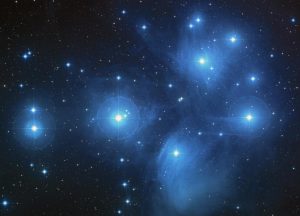April Skies – Jupiter – Meteors – Neptune Disappearing Act !
April should see the skies in FNQ begin to clear somewhat and just in time for the Opposition of Jupiter on Saturday the 8th. This means Jupiter will be rising in the E/SE as the sun sets on the opposite Horizon. What this means for you is that its possible to watch Jupiter ALL night long

What you will get to see is a complete rotation of Jupiter on its Axis throughout the night, In fact on the 8th the Great Red Spot will be most prominent at 3am that morning and again just before midnight. Jupiter will also be at its biggest and brightest at this time. Even a small telescope will show you Jupiters Cloud Bands & moons. Night Sky secrets will certainly do a viewing night around this time to show Jupiter at its best !
The Lyrids Meteor shower is one worth watching out for this month from the 16th to the 25th with its peak on the 22nd when up to 18 meteors per hour originating in the vicinity of the Bright Star Vega will grace the morning sky low in the Pre Dawn hours in the NE. There is an Aboriginal significance to this meteor shower for the Boorong People:
“For the Boorong, the bright star Vega was prominently known as Neilloan, the Mallee fowl. Neilloan is seen in autumn coinciding with the time the Mallee fowl start to build their elaborate nests.The meteor shower is described as Neilloan kicking up the shooting stars in the same way that the earth-bound Mallee fowl are digging out their nesting mounds and kicking up sand and dirt. (1)
The other significant event in in the night sky across eastern and central Australia is the occultation of Neptune by the moon. There is a great difference in brightness between the moon and Neptune, so the published time to look is at 4:58am on the 23rd of April in the eastern states when Neptune remerges from the dark limb of the moon. The exact time of reappearance will vary a little depending on your Latitude so allow a bit of extra time. For Cairns FNQ it is 4:35am.
May Skies – More Meteors – Saturn & The Moon
One of the best meteor showers of the Year happens this month with the Eta Aquarids reaching their peak in the Predawn hours high in the NE Sky on Friday the 5th of May. The shower has an active period from the 19th of April to the 28th of May. This is a shower doubly as active (40/hr) as the Lyrids and with a connection to that most famous of comets “Haley’s Comet” The Eta Aquarids, like their sister shower the Orionids in October (also from Comet Haley), are one of the better annual showers to observe.
Finally we have Saturn just 3 degrees south of the moon on Saturday the 13th of May just 2 days past the full moon in the early evening. The moon is at Apogee on this day (furtherest from earth)
For the meteor showers you just need your eyes and a dark location, for the other events you will need a telescope.
- Dr Tanya Hill in “The Conversation” 22nd April 2014


